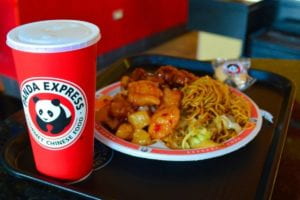In this week’s reading, Pilcher’s article discusses about how physical and knowledge infrastructure create values and meanings around food. It is interesting to think culinary knowledge and cultural traditions as a form of infrastructure. Indeed, with the boom of social media, the behavior of sharing and commenting have been playing increasingly critical roles in the dissemination of food knowledge. However, one inspiring point made by the author is that restaurants also serve as key knowledge infrastructure in the food industry. As the author put,“ restaurant as a site of innovation and cultural exchange”. The importance of restaurants is not restricted to the inheritance of secret recipes and cooking methods. Restaurants serving foreign cuisines are perfect places to observe how food, as a form of culture, learns how to “glocalize” itself to better adapt to the local market. A typical example I could think of is Panda Express in America. Nearly every Chines tourist group will dine in Panda Express at least once during their trip in the United State. Panda Express has become a standard place for group dinners of Chinese tourists. However, no Chinese will recognize the food served in Panda Express as Chinese food. It does not even provide chopsticks for the consumers. The food comes with fork and knife instead. What is served in Panda Express is American Style Chinese food, or may be we can call it Chinese food for Americans. Many dishes in Panda Express betray their original tastes to satisfy American appetites. According to a report from Sohu, the founder of Panda Express — Zhengchang Cheng adopted several strategies to accomplish the transformation.

In order to make Chinese food more suitable for American tastes, considering that Americans like sweet and sour taste with a little bit of spicy flavor, Panda Express has made a series of localized innovations based on Chinese food elements. The most typical dish is the“Orange Chicken” (fried chicken with sour source). Basically, every Chinese restaurant I’ve been to in New York serves this course and highlights it as a recommended dish for their customers.What is more, in order to make the food production process more standardized and less dependent on the culinary skills of the cook, Panda Express adopted a “central kitchen” to solve this problem; the materials of all the dishes are processed in advance and made half-cooked, and then distributed to various branches. The seasonings are prepared in advance according to standardized recipes, packed in fixed barrels, and sent to the store for chefs to use directly. Even an inexperienced chef can cook up-to-standard “Chinese food” with the help of those source.That is why one can often see strange scenes of foreign chefs cooking Chinese food in Panda Express,.
Restaurants like Panda Express are locations where different cultures encounter each other and exchange knowledge. Changes on recipes reflect Chinese migrants’ attempts to integrate themselves into the foreign cultural context and reshape the imaginary picture of Chinese traditions from the perspective of food.
See the detailed story of Panda Express here.
Reference: https://www.sohu.com/a/281330280_120047038
Leave a Reply